We underestimate just how beautiful ornamental grasses can be in the garden. They can be statement plants, the key to a modern garden look, and the textural component you may be looking for. Read on for my tips for growing ornamental grass, and find the perfect match with my unique list of grasses you haven’t tried yet.
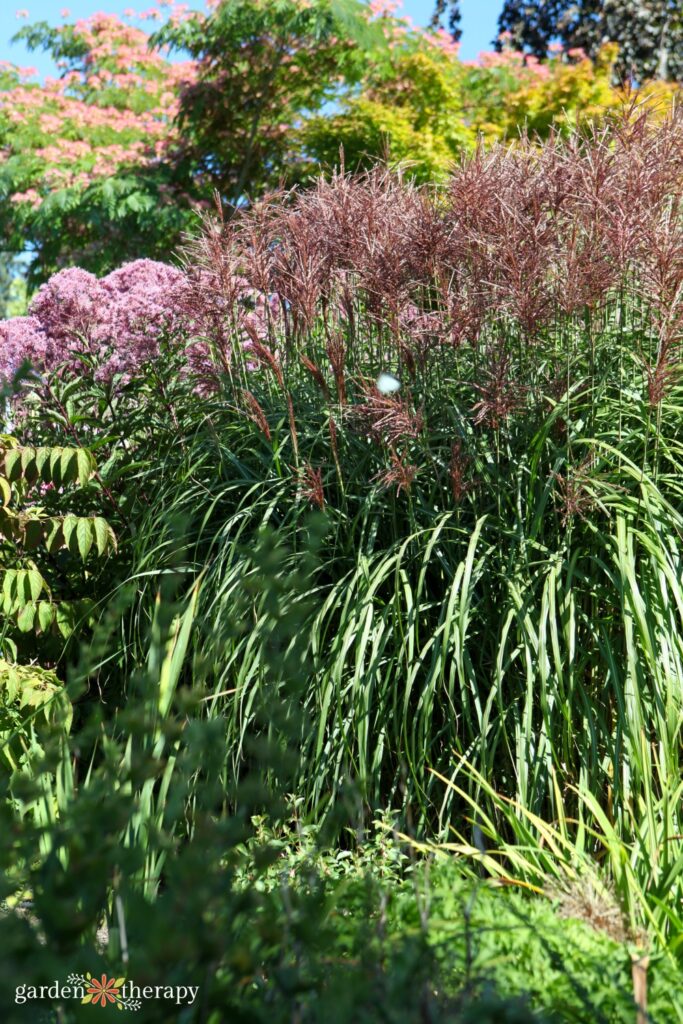
Grasses are VERY underrated when it comes to the garden. When I was a novice gardener, I went to the garden centre and absolutely fell in love with purple fountain grass and Japanese blood grass. I thought they were some of the most stunning plants in the whole place.
Of course, I bought them. They became star plants in my garden that summer. The dark leaves and big bush flowers of the purple fountain grass grew to 5 ft. tall, making a dramatic appearance. The Japanese blood grass also had dramatic colouring, with cranberry red grass blades.
I was really sad when they eventually died, as I considered them an investment. But they were my first foray into growing ornamental grasses, and I’ve been hooked ever since.
Today, I’ll share with you some tips for growing ornamental grasses, as well as a few standouts to prove just how fun they can be in the garden


Designing With Ornamental Grasses
In most cases, people use ornamental grasses as filler or as a part of xeriscaping. And they’re really great for that! But I encourage you to think beyond the plain ornamental grass and to make them the focus of the garden as well.
My modern take is a garden made entirely of ornamental grasses. The grasses become the star, and they create a very tranquil atmosphere. This would be perfect for a meditation garden.
Ornamental grasses can belong in just about any type of garden setting, mostly because native grasses can be found all over the world. From cottage gardens to rock gardens, there is a grass that will work. They’re also wildlife-friendly, providing habitat and food for insects and birds.
Most ornamental grasses are pest and drought-resistant, and a majority can tolerate partial shade. They’re one of the most low-maintenance plants you can grow, so I encourage you to try growing them in those hard-to-grow areas in your garden. For instance, Japanese forest grass became a star in my shady garden where other plants struggled.
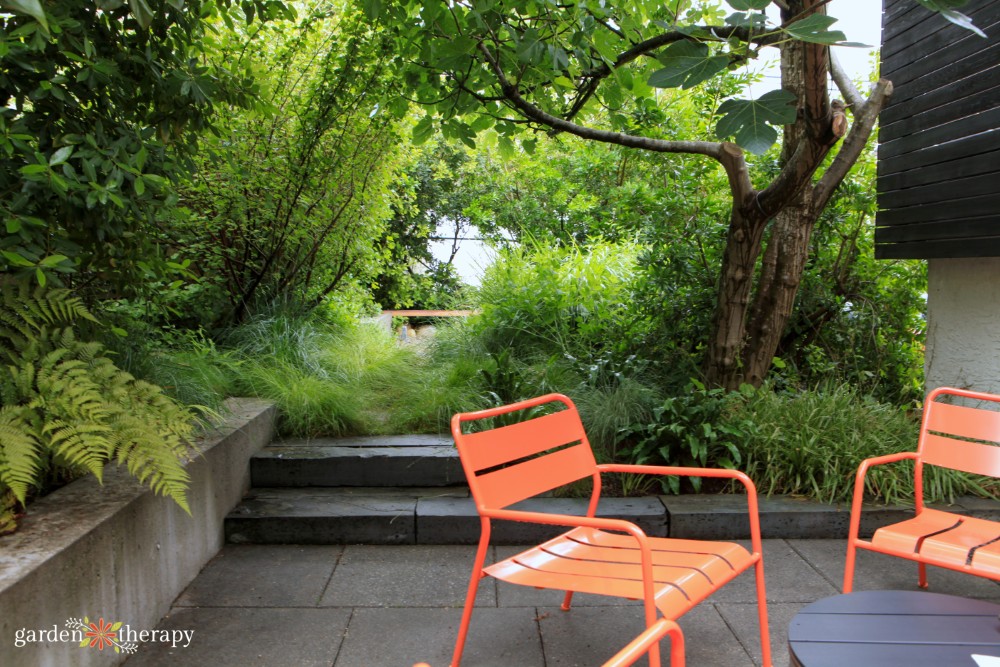

10 Unique Ornamental Grasses to Grow
Before purchasing any ornamental grasses, make sure you check that they’re suitable for your area. Some grasses can be invasive, spreading aggressively, while others nicely clump.
Japanese Forest Grass
Hakonechloa macra
- USDA Zones: 4-9 (perennial)
- Sunlight requirements: Partial shade
- Notable characteristics: shade lover, yellowy foliage, natural round shape
Japanese forest grass has a bright yellow tone to it, making it a lovely plant to brighten up dark corners. I’ve used it in my shady areas to help provide a golden pop, giving the illusion of more light. It’s a rare grass that thrives in shady areas.
What’s also lovely about this plant is the natural round shape it creates. It grows up to 18” high and 24” wide, and is not known to spread invasively like other grasses.
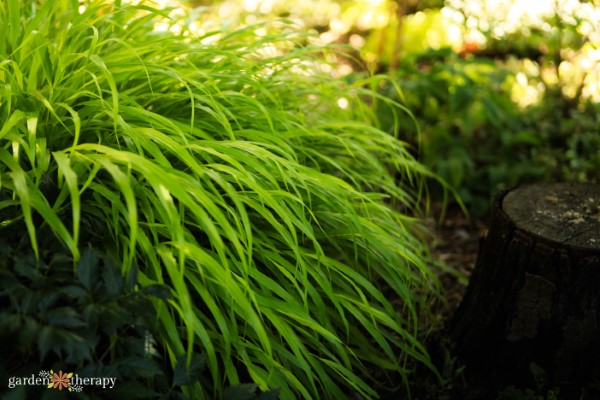

Bunny Tails
Lagurus ovatus
- USDA Zones: 4-10 (annual)
- Sunlight requirements: Full sun
- Notable characteristics: soft texture, dried flower favourite, winter interest, re-seeder
I first grew bunny tail grass in my children’s play garden. They have the softest texture, and the little puffs at the end really do look like they belong to a bunny. They grow about 30 cm tall, making them the perfect height for littles to walk through and touch in the play garden.
They’re an extremely popular cut flower, being a beautiful pale green in the spring and summer before maturing into an ivory and sometimes pinkish colour in the fall. They also dry amazingly, and are often dyed fun colours.
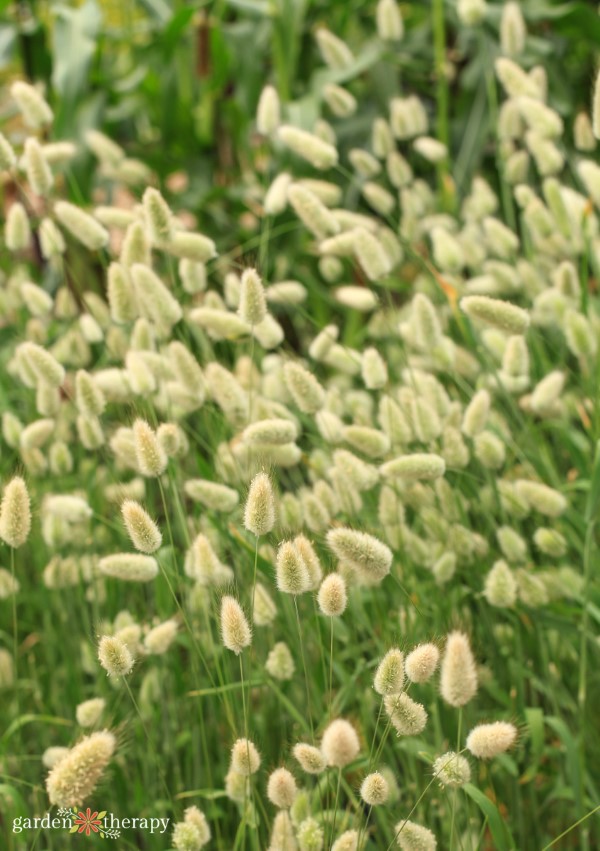

Wandering Chilean Iris
Libertia peregrinans
- USDA Zones: 8-10 (perennial)
- Sunlight requirements: Partial to full sun
- Notable characteristics: narrow sword-like foliage, orange shade, fragrant white flowers
For those who live in warmer zones, the wandering Chilean Iris is such a fun and vivid ornamental grass to grow. It retains this bright orange colour all year long, becoming a focal point that will test even the showiest flowers.
To get the best colour, you’ll want them in full sun. The foliage brightens in the winter, so it’s great for some winter interest. The plant can also produce small and fragrant white flowers that grow on top of the narrow, straight stems. These bloom starting in late spring.
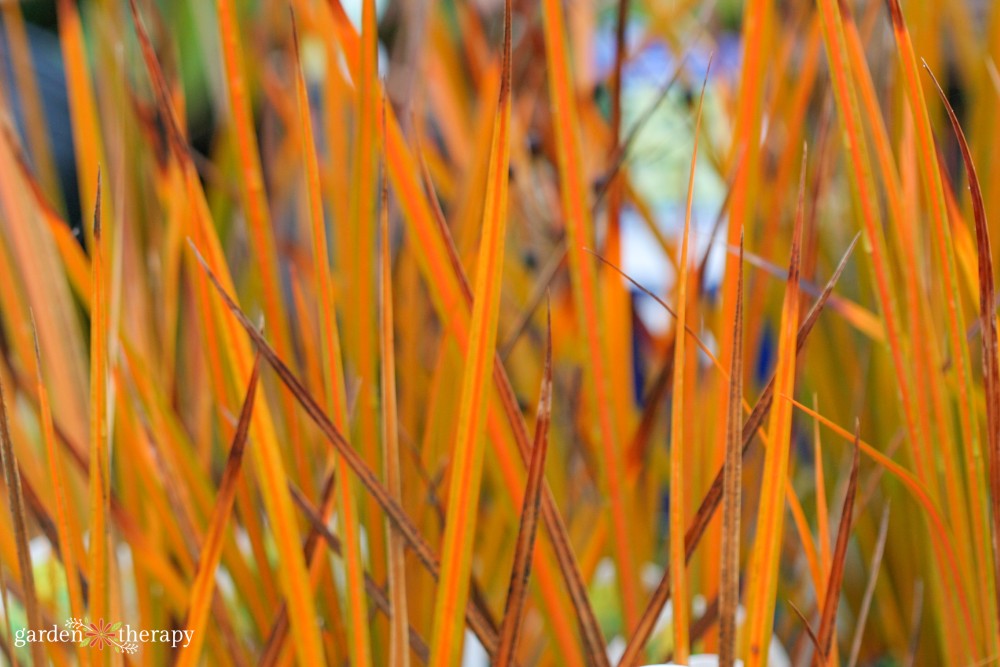

Blue Fescue Grass
Festuca glauca
- USDA Zones: 4-8 (perennial)
- Sunlight requirements: Partial to full sun
- Notable characteristics: unique blue foliage, mound shape, fast-growing
Blue fescue grass is a classic ornamental grass option, and for good reason! The blue foliage is notable, providing a teal-silver colour you don’t often see in the garden. It’s known for being fast-growing, softer texture, and returning year after year.
It’s important to note that blue fescue is different than the tall fescue, which you see in turf lawns. I included blue fescue grass in my jack-o-plantern below!
Common Cattail
Typha latifolia
- USDA Zones: 3-10 (perennial)
- Sunlight requirements: Partial to full sun
- Notable characteristics: aquatic, up to 10 ft. tall, herbaceous perennial, fluffy brown tops
First, you had bunnytails; now, I present to you cattails! Anyone who grew up on prairies and in BC will recognize these fun and fluffy plants. Aquatic plants, they grow along the edges of marshes and bogs, growing up to ten feet tall.
While they have large, long leaves that grow from the base of the plant, the most notable aspect is the cattails. They’re firm and brown when fresh, and turn fluffy as they age.
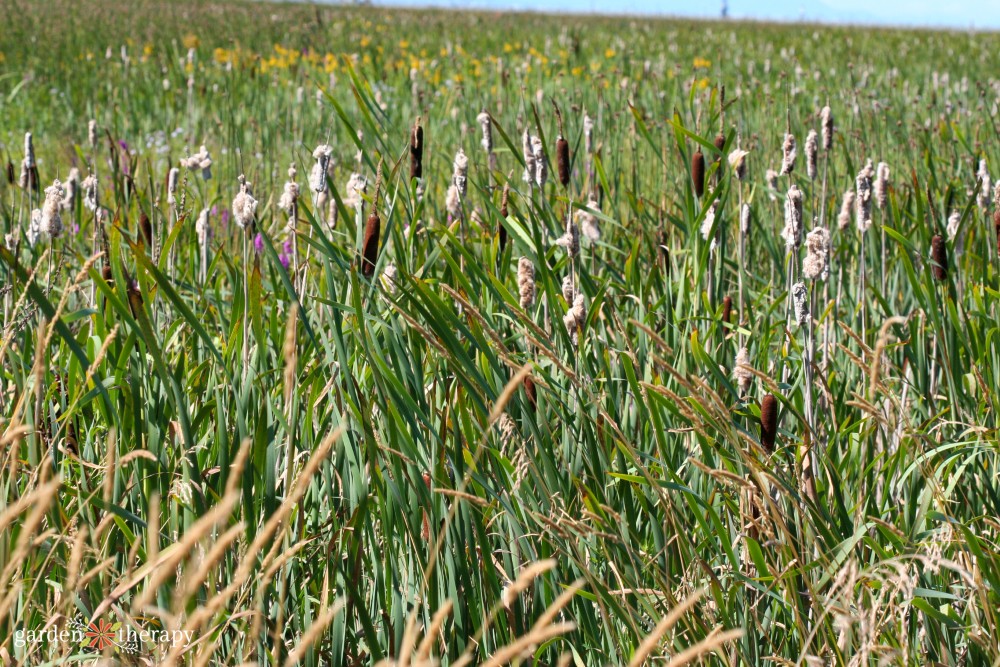

Japanese Blood Grass
Imperata cylindrica
- USDA Zones: 5-9 (perennial)
- Sunlight requirements: Full sun
- Notable characteristics: bright red tips, Deer resistant, serrated foliage, invasive
Another bright favourite of mine is the Japanese Blood Grass. Bright green on the bottom and dark red on top, these offer a fun pop of colour. They work well as accents or in borders.
It can have invasive qualities, so keep this in mind when deciding where to plant it. Look for sterile cultivars such as ‘Red Baron’ and ‘Rubra’ to avoid this concern. That being said, this is also why it’s known as an extremely low-maintenance plant.
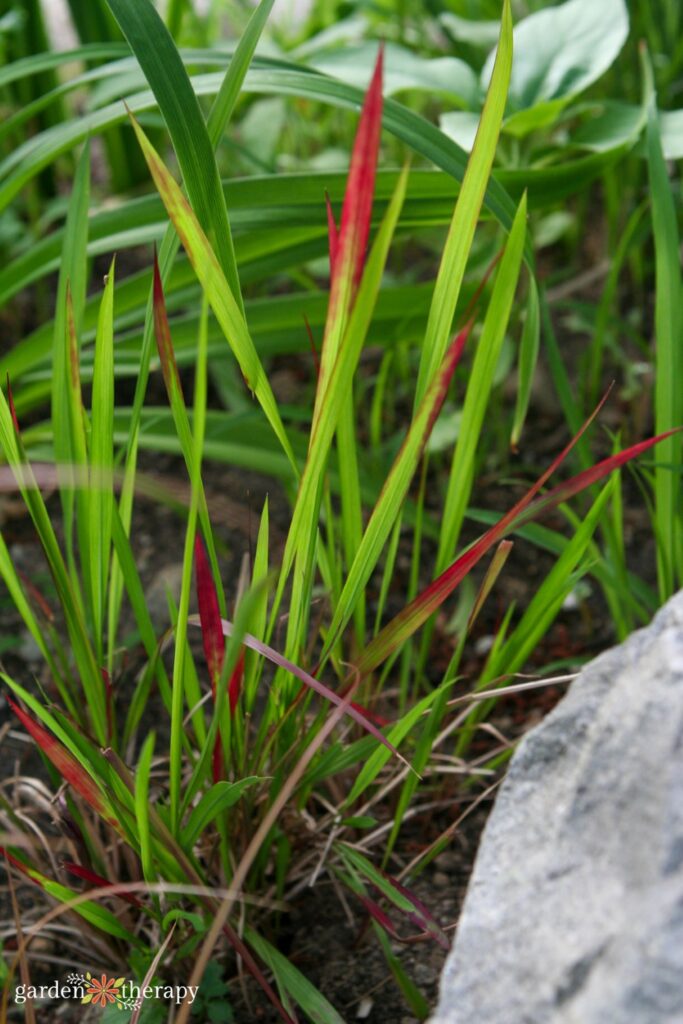

Purple Majesty Ornamental Millet
Pennisetum glaucum
- USDA Zones: 4-9 (annual)
- Sunlight requirements: Partial to full sun
- Notable characteristics: dark foliage, accent plant, height, pollinator favourite
I included purple majesty ornamental millet in my pollinator seed collection way back in 2018, and it remains one of the most stunning grasses I’ve grown. The dark purple foliage and cattail-like heads make it a great focal and accent plant.
It can grow up to 1.2 m tall, so it works great planted at the back of the bed or somewhere you don’t mind a little height. Then sit back and watch the bees visit!
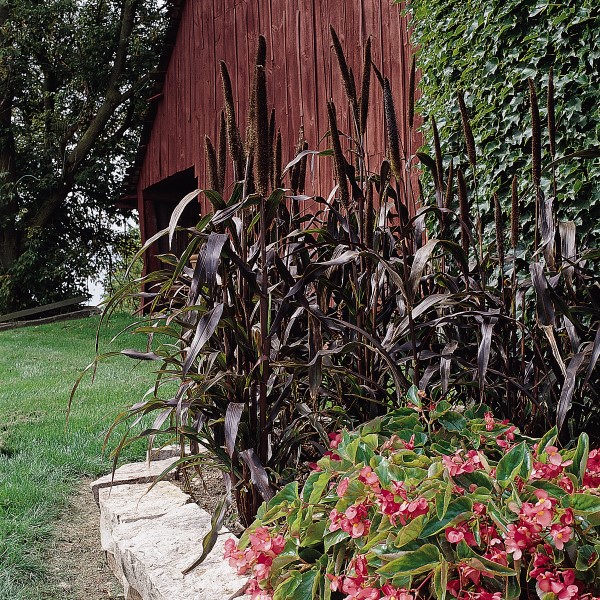

Weeping Brown Sedge
Carex flagellifera
- USDA Zones: 6-9 (perennial)
- Sunlight requirements: Partial to full sun
- Notable characteristics: golden-brown colour, low mound, evergreen
Another grass I featured in my jack-o-plantern, the weeping brown sedge, stays a beautiful golden-brown colour that feels so autumnal to me. It grows best in mild climates where it acts as a herbaceous evergreen perennial, though it is short-lived.
The leaves are very fine, providing a nice textural and low-growing element near the front of garden beds
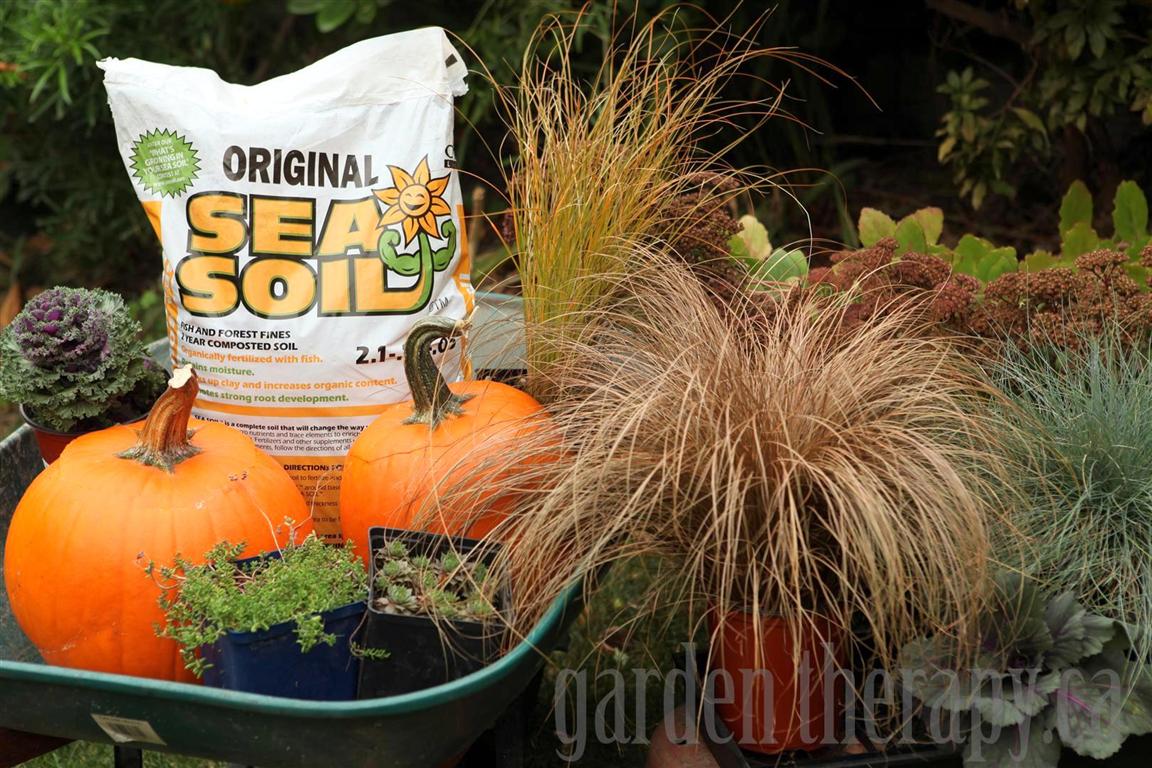

Curly Rush Grass
Juncus effusus ‘Spiralis’
- USDA Zones: 5-9 (perennial)
- Sunlight requirements: Partial to full sun
- Notable characteristics: spiral stems, patio plant, houseplant, likes moisture
The curly rush grass may be the most fun one on this list of grasses. It produces corkscrew-shaped stems that are smooth and upright. They grow in nice clusters and produce small yellowish flowers in late summer.
Some grow the curly rush grass as a houseplant, but it also works well as a container plant for the patio or as part of a children’s garden, thanks to its fun shape and texture.
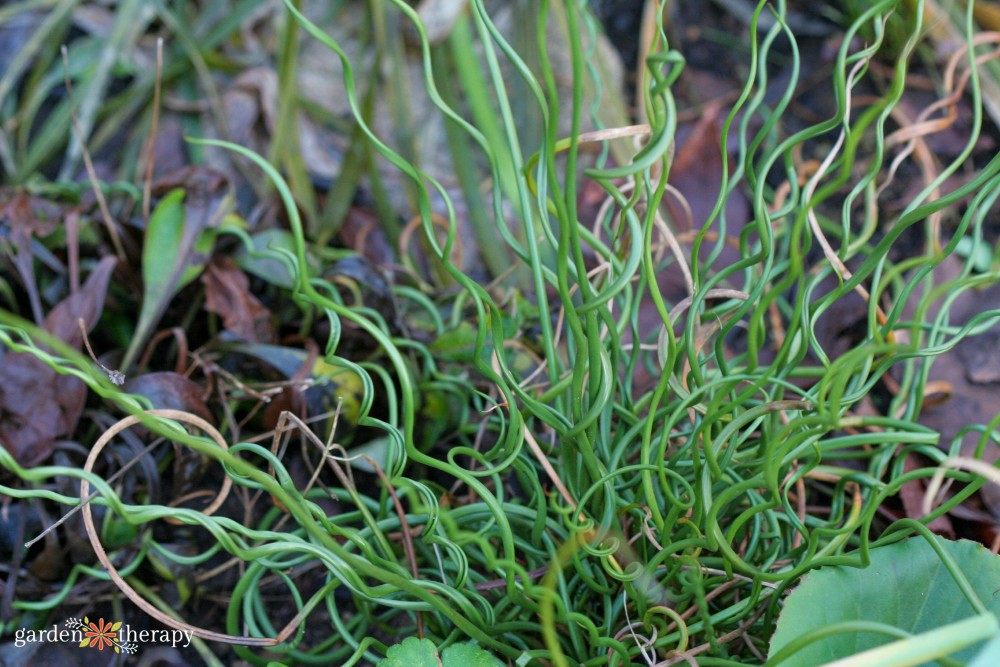

Horsetail
Equisetum hyemale
- USDA Zones: 4-9 (perennial)
- Sunlight requirements: Partial to full sun
- Notable characteristics: grows in any conditions, spreads quickly, toxic to grazing animals
Horsetail is a fun-looking evergreen perennial. It grows tall and upright, appearing somewhere between a grass and bamboo.
Horsetail can handle whatever you throw at it and will grow where nothing else would. In most places, it’s considered a weed. Since it reproduces through spores and underground rhizomes, it can spread very quickly and easily fill in an area.
So when would you use horsetail? It can grow in dry, poor soil when you need something to fill an area. It can also grow in standing water, making it a good aquatic plant if you have a contained pond. Just know what you’re signing up for!
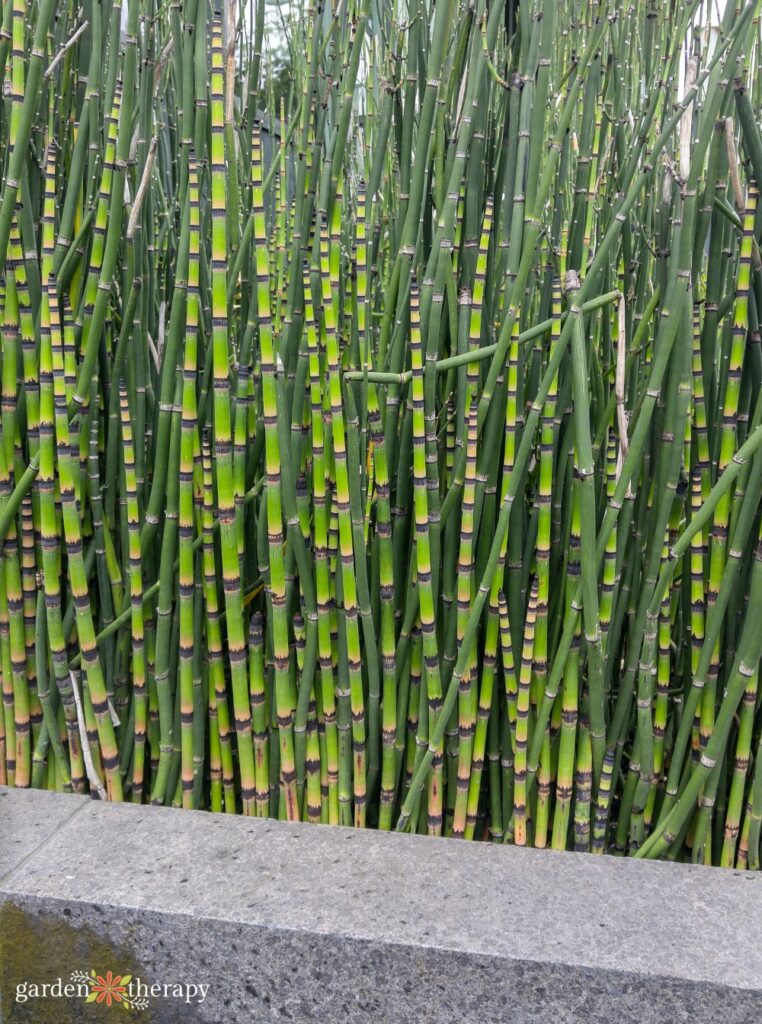

Tips for Growing Ornamental Grass
- Dividing. Eventually, your perennial grasses will need to be divided, typically to control the size or when the centre of the grass is dead. Divide them in early spring when the plants are just starting to turn green. Dig up the whole root ball, and cut it in half (or more), removing any dead parts before replanting.
- Water tolerance. All grasses will have different water requirements. While most are drought-tolerant, others thrive in damp and moist conditions. Be sure to check the plant tag to know its water requirements.
- Sharp edges. Many grasses have sharp blades and barbs on them. If you touch them the wrong way, they can cut you. It’s their defence mechanism after all. Just be careful when working with your ornamental grasses, wearing gloves when necessary.
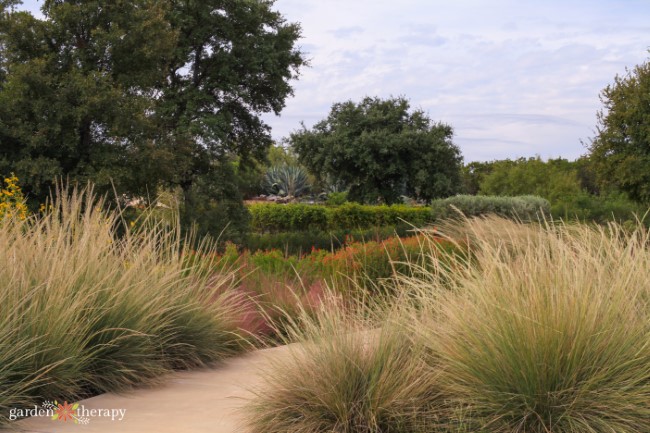

Ornamental Grasses Care FAQ
All annual ornamental grasses should be planted in the spring so you can get the most out of them. Any perennial grasses can be planted in the spring or fall. I like the fall, as that’s when perennials are all on discount!
I wouldn’t worry much about providing fertilizer to your ornamental grasses. I mix in compost when planting, and add it to all my garden beds throughout the summer.
If your grass is in a container, then it will need monthly fertilizer applications during the growing season. If you have poor soil in your garden beds, you may want to add some organic granular fertilizer at the beginning of the growing season.
Leave your ornamental grasses for the fall and most of the winter. They can provide some winter interest in the garden, and also a necessary habitat for wildlife. In late winter or early spring, cut back last year’s growth to the ground before the plant shows signs of growth again.
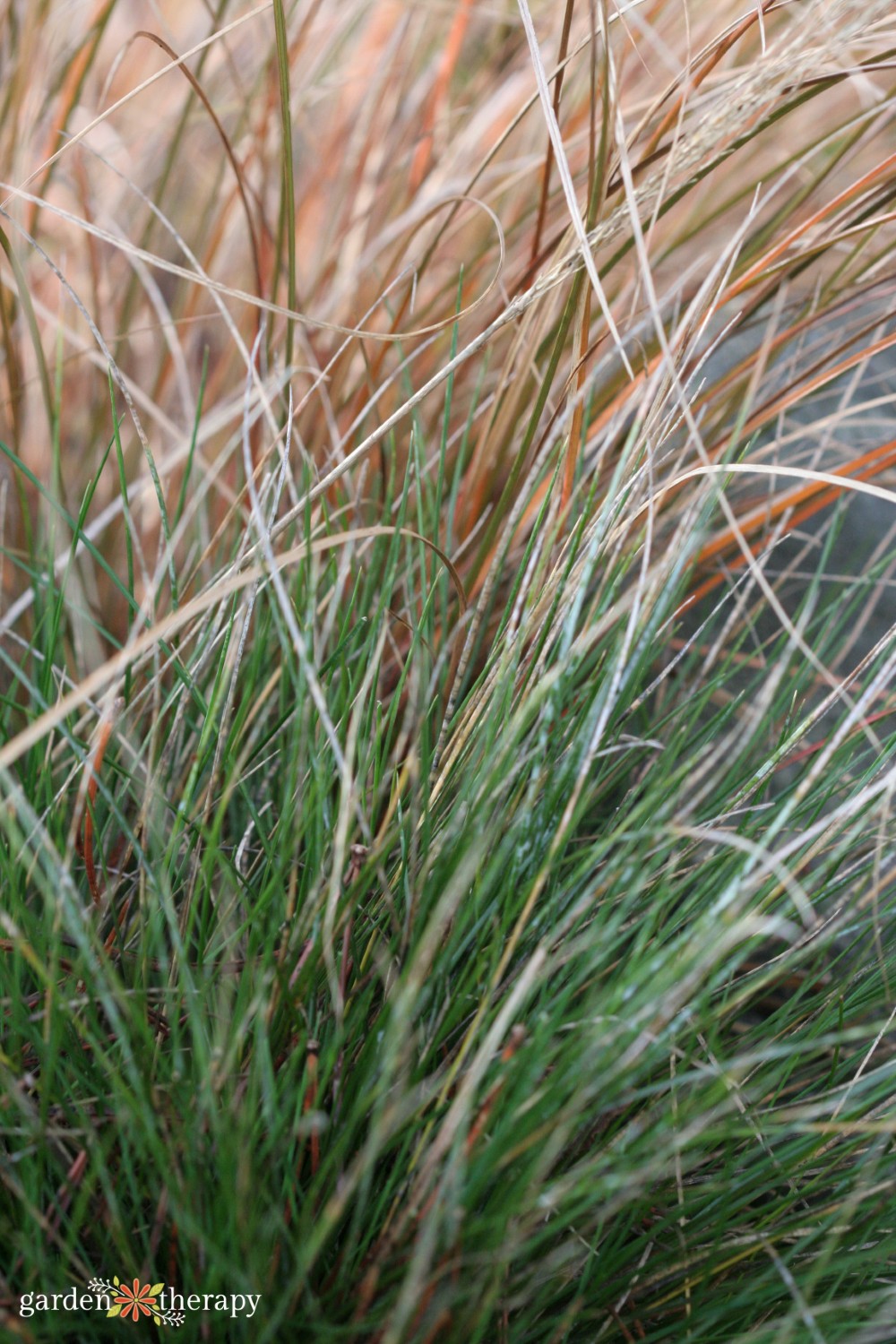

More Low-Maintenance Gardening Tips
A city girl who learned to garden and it changed everything. Author, artist, Master Gardener. Better living through plants.

